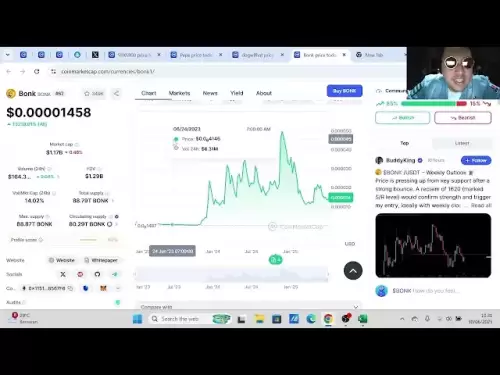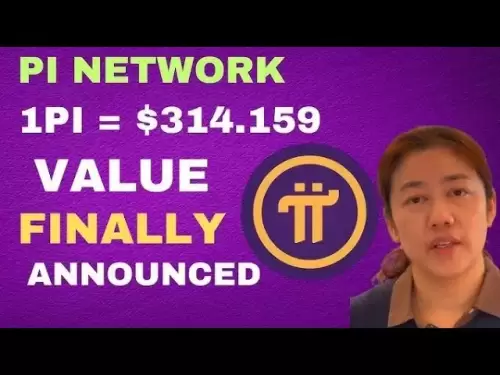-
 Bitcoin
Bitcoin $107,725.9156
0.27% -
 Ethereum
Ethereum $2,481.6786
1.84% -
 Tether USDt
Tether USDt $1.0003
0.01% -
 XRP
XRP $2.2154
1.26% -
 BNB
BNB $658.2447
1.42% -
 Solana
Solana $157.2028
4.24% -
 USDC
USDC $1.0000
0.02% -
 TRON
TRON $0.2788
0.91% -
 Dogecoin
Dogecoin $0.1655
1.00% -
 Cardano
Cardano $0.5714
2.67% -
 Hyperliquid
Hyperliquid $40.6187
6.30% -
 Bitcoin Cash
Bitcoin Cash $519.8117
5.84% -
 Sui
Sui $2.8338
0.59% -
 Chainlink
Chainlink $13.4150
0.60% -
 UNUS SED LEO
UNUS SED LEO $9.1205
-0.54% -
 Avalanche
Avalanche $18.0666
0.85% -
 Stellar
Stellar $0.2363
-0.46% -
 Toncoin
Toncoin $2.9550
2.57% -
 Shiba Inu
Shiba Inu $0.0...01151
-0.15% -
 Litecoin
Litecoin $86.2252
-0.57% -
 Hedera
Hedera $0.1498
1.51% -
 Monero
Monero $318.0620
3.18% -
 Polkadot
Polkadot $3.4174
-0.02% -
 Dai
Dai $1.0000
0.02% -
 Bitget Token
Bitget Token $4.5444
-1.05% -
 Ethena USDe
Ethena USDe $1.0003
0.00% -
 Uniswap
Uniswap $7.1773
-0.53% -
 Pepe
Pepe $0.0...09916
3.19% -
 Aave
Aave $274.7399
0.32% -
 Pi
Pi $0.5136
-2.06%
What is the long-term stability of USDT?
USDT's long-term stability hinges on transparent reserves, regulatory navigation, and competition with other stablecoins like USDC and DAI.
Apr 04, 2025 at 10:28 pm
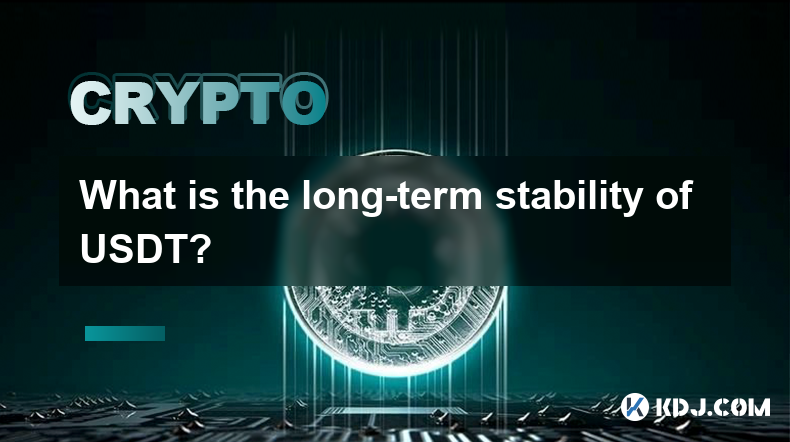
The long-term stability of USDT, also known as Tether, is a topic of significant interest within the cryptocurrency community. USDT is a type of stablecoin, designed to maintain a stable value by being pegged to a reserve asset, typically the US dollar. The stability of USDT is crucial for its widespread use in trading, as a hedge against volatility, and as a store of value within the crypto ecosystem. To understand the long-term stability of USDT, it's essential to examine its underlying mechanisms, historical performance, and the challenges it faces.
Mechanisms Behind USDT Stability
USDT achieves its stability through a mechanism known as a fiat-collateralized stablecoin. This means that for every USDT token in circulation, Tether Limited claims to hold an equivalent amount of US dollars in reserve. This 1:1 peg is intended to ensure that USDT can be redeemed for its equivalent value in USD at any time, thus maintaining its stability. Tether Limited periodically releases attestations from independent auditors to verify the reserves backing USDT. However, the transparency and frequency of these audits have been a point of contention within the crypto community.
To maintain the peg, Tether employs several strategies:
- Issuance and Redemption: Tether can issue new USDT tokens when there is a demand for them and redeem them when users want to convert their USDT back to USD. This process helps to keep the supply of USDT in line with demand, thereby maintaining its value.
- Market Operations: Tether may engage in market operations to stabilize the peg, such as buying or selling USDT in the open market to counteract any deviations from the $1 peg.
- Collateral Management: Tether manages its reserves to ensure they are sufficient to back the circulating supply of USDT. This includes managing the types of assets held in reserve, which may include cash, cash equivalents, and other assets.
Historical Performance of USDT
Historically, USDT has shown a remarkable ability to maintain its peg to the US dollar, even during times of significant market turbulence. For instance, during the cryptocurrency market crash in March 2020, while many cryptocurrencies experienced severe price drops, USDT remained largely stable around the $1 mark. This stability has made USDT a popular choice for traders looking to move assets in and out of volatile cryptocurrencies without converting back to fiat currency.
However, there have been instances where USDT has deviated from its peg, albeit briefly. One notable example was in October 2018 when USDT briefly traded below $0.95. These deviations were quickly corrected, but they raised questions about the robustness of USDT's stability mechanisms. The incidents highlighted the importance of maintaining sufficient and verifiable reserves to back the circulating supply of USDT.
Challenges to USDT's Long-term Stability
Despite its historical performance, USDT faces several challenges that could impact its long-term stability. One of the primary concerns is the transparency of its reserves. Tether has faced criticism for not providing regular, comprehensive audits of its reserves. This lack of transparency can undermine confidence in USDT's ability to maintain its peg, especially during times of market stress.
Another challenge is the regulatory environment. As stablecoins like USDT become more integral to the cryptocurrency ecosystem, they are attracting increased scrutiny from regulators around the world. Regulatory actions, such as restrictions on the issuance or use of stablecoins, could impact USDT's stability. For instance, if regulators were to impose stricter reserve requirements or limit the types of assets that can be held as collateral, it could affect Tether's ability to maintain its peg.
Additionally, the rise of competing stablecoins, such as USDC and DAI, poses a competitive challenge to USDT. These alternatives offer similar stability but with different mechanisms and, in some cases, greater transparency. As more users and platforms adopt these competing stablecoins, it could impact the demand for USDT and, consequently, its stability.
Future Outlook for USDT Stability
Looking ahead, the long-term stability of USDT will depend on several factors. First, Tether's ability to maintain and demonstrate the sufficiency of its reserves will be crucial. More frequent and detailed audits could help to restore and maintain confidence in USDT's stability. Second, the evolving regulatory landscape will play a significant role. Tether will need to navigate regulatory requirements effectively to ensure the continued stability of USDT.
Finally, the competitive landscape within the stablecoin market will influence USDT's stability. Tether will need to continue to innovate and adapt to remain a preferred choice for users seeking stability within the cryptocurrency ecosystem. This could involve enhancing transparency, improving the user experience, or exploring new use cases for USDT.
Common Questions About USDT Stability
Q: How does USDT maintain its peg to the US dollar?
A: USDT maintains its peg through a combination of issuance and redemption processes, market operations, and collateral management. Tether issues new USDT tokens to meet demand and redeems them when users want to convert back to USD. Market operations help to counteract any deviations from the peg, and Tether manages its reserves to ensure they are sufficient to back the circulating supply of USDT.
Q: Has USDT ever lost its peg?
A: Yes, there have been instances where USDT has briefly deviated from its $1 peg. One notable example was in October 2018 when USDT traded below $0.95. However, these deviations were quickly corrected, and USDT has generally maintained its peg over time.
Q: What are the main challenges to USDT's long-term stability?
A: The main challenges to USDT's long-term stability include the transparency of its reserves, the regulatory environment, and competition from other stablecoins. Tether's lack of regular, comprehensive audits has raised concerns about the sufficiency of its reserves. Regulatory actions could impact Tether's ability to maintain its peg, and the rise of competing stablecoins could affect demand for USDT.
Q: How can Tether improve the long-term stability of USDT?
A: Tether can improve the long-term stability of USDT by enhancing the transparency of its reserves through more frequent and detailed audits. Navigating the regulatory landscape effectively and adapting to new regulations will also be crucial. Additionally, Tether can remain competitive by innovating and exploring new use cases for USDT within the cryptocurrency ecosystem.
Disclaimer:info@kdj.com
The information provided is not trading advice. kdj.com does not assume any responsibility for any investments made based on the information provided in this article. Cryptocurrencies are highly volatile and it is highly recommended that you invest with caution after thorough research!
If you believe that the content used on this website infringes your copyright, please contact us immediately (info@kdj.com) and we will delete it promptly.
- Coinbase, Altcoins, and Listings: What's the Buzz?
- 2025-07-01 00:30:11
- Chainlink's Bullish Signals: Investors Bet on Long-Term Value
- 2025-07-01 00:50:12
- Bybit, Kraken, and Tokenized Stocks: A New Era for Trading?
- 2025-07-01 00:30:11
- MicroStrategy, S&P 500, and Crypto News: A Wild Ride for Bitcoin and Beyond
- 2025-07-01 00:55:11
- Week Review: Neo Updates, Crypto Market Movers, and the Stablecoin Evolution (June 23-29)
- 2025-07-01 01:00:12
- Crypto.com & dYdX: Derivative Trading Revolutionized for Everyone
- 2025-07-01 00:35:12
Related knowledge

How to choose a reliable USDT exchange service provider? How to identify?
Jun 12,2025 at 03:15pm
Understanding the Role of USDT in Cryptocurrency TradingUSDT (Tether) is one of the most widely used stablecoins in the cryptocurrency market. It is designed to maintain a 1:1 peg with the U.S. dollar, offering traders and investors a way to hedge against volatility while remaining within the crypto ecosystem. Choosing a reliable USDT exchange service p...

What is the most convenient way to cash out small amounts of USDT? Is there a shortcut?
Jun 11,2025 at 11:00pm
Understanding the Need to Cash Out Small USDT AmountsCashing out small amounts of USDT can be a challenge for many crypto users. Traditional methods often involve high fees, minimum withdrawal limits, or cumbersome verification processes that make it inefficient for small transactions. The key is to find a method that balances speed, cost, and convenien...

How to transfer USDT to PayPal or international payment tools?
Jun 15,2025 at 05:28am
Understanding the Basics of USDT and PayPal IntegrationUSDT (Tether) is a stablecoin pegged to the US dollar, offering blockchain-based value transfer with minimal volatility. PayPal, on the other hand, is a centralized digital wallet that facilitates fiat currency transactions globally. Direct integration between USDT and PayPal does not exist due to t...
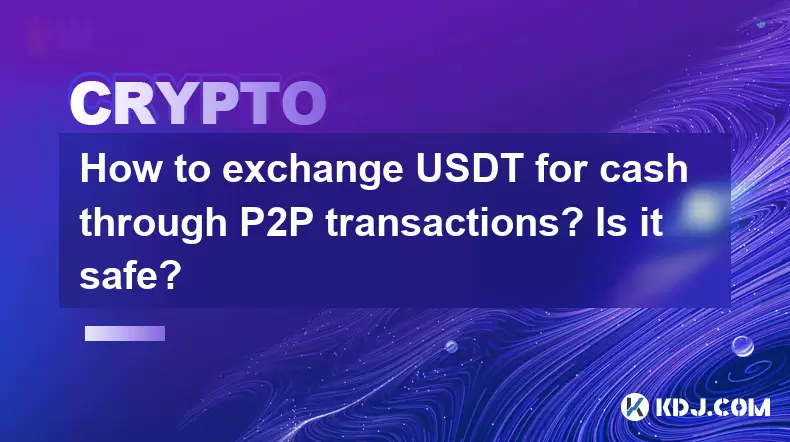
How to exchange USDT for cash through P2P transactions? Is it safe?
Jun 18,2025 at 07:56am
Understanding USDT and P2P TransactionsTether (USDT) is a stablecoin pegged to the value of the US dollar, making it a popular choice for users who want to avoid the volatility of other cryptocurrencies while still participating in the crypto ecosystem. Peer-to-peer (P2P) transactions allow individuals to trade directly with each other without going thr...
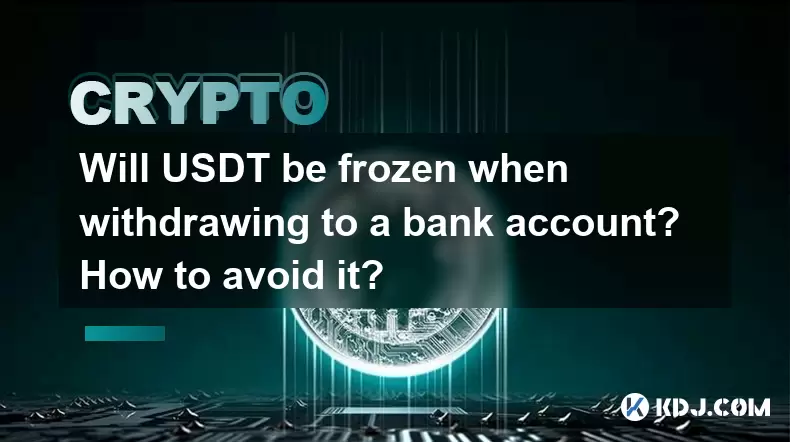
Will USDT be frozen when withdrawing to a bank account? How to avoid it?
Jun 15,2025 at 10:03am
Understanding USDT Withdrawals and Bank Account Freezing RisksWhen users decide to withdraw USDT (Tether) to a bank account, one of the most common concerns is whether their funds will be frozen during the process. This concern stems from real-life cases where individuals have encountered delays or restrictions when converting digital assets into fiat c...

How to avoid risks when exchanging USDT for cash? What are the pitfalls?
Jun 11,2025 at 08:14pm
Understanding the Risks of Exchanging USDT for CashWhen exchanging USDT (Tether) for cash, users must be aware of the potential risks involved. As a stablecoin pegged to the US dollar, USDT is widely used in crypto transactions due to its price stability. However, converting it into fiat currency like USD or CNY can expose users to several pitfalls, inc...

How to choose a reliable USDT exchange service provider? How to identify?
Jun 12,2025 at 03:15pm
Understanding the Role of USDT in Cryptocurrency TradingUSDT (Tether) is one of the most widely used stablecoins in the cryptocurrency market. It is designed to maintain a 1:1 peg with the U.S. dollar, offering traders and investors a way to hedge against volatility while remaining within the crypto ecosystem. Choosing a reliable USDT exchange service p...

What is the most convenient way to cash out small amounts of USDT? Is there a shortcut?
Jun 11,2025 at 11:00pm
Understanding the Need to Cash Out Small USDT AmountsCashing out small amounts of USDT can be a challenge for many crypto users. Traditional methods often involve high fees, minimum withdrawal limits, or cumbersome verification processes that make it inefficient for small transactions. The key is to find a method that balances speed, cost, and convenien...

How to transfer USDT to PayPal or international payment tools?
Jun 15,2025 at 05:28am
Understanding the Basics of USDT and PayPal IntegrationUSDT (Tether) is a stablecoin pegged to the US dollar, offering blockchain-based value transfer with minimal volatility. PayPal, on the other hand, is a centralized digital wallet that facilitates fiat currency transactions globally. Direct integration between USDT and PayPal does not exist due to t...

How to exchange USDT for cash through P2P transactions? Is it safe?
Jun 18,2025 at 07:56am
Understanding USDT and P2P TransactionsTether (USDT) is a stablecoin pegged to the value of the US dollar, making it a popular choice for users who want to avoid the volatility of other cryptocurrencies while still participating in the crypto ecosystem. Peer-to-peer (P2P) transactions allow individuals to trade directly with each other without going thr...

Will USDT be frozen when withdrawing to a bank account? How to avoid it?
Jun 15,2025 at 10:03am
Understanding USDT Withdrawals and Bank Account Freezing RisksWhen users decide to withdraw USDT (Tether) to a bank account, one of the most common concerns is whether their funds will be frozen during the process. This concern stems from real-life cases where individuals have encountered delays or restrictions when converting digital assets into fiat c...

How to avoid risks when exchanging USDT for cash? What are the pitfalls?
Jun 11,2025 at 08:14pm
Understanding the Risks of Exchanging USDT for CashWhen exchanging USDT (Tether) for cash, users must be aware of the potential risks involved. As a stablecoin pegged to the US dollar, USDT is widely used in crypto transactions due to its price stability. However, converting it into fiat currency like USD or CNY can expose users to several pitfalls, inc...
See all articles























